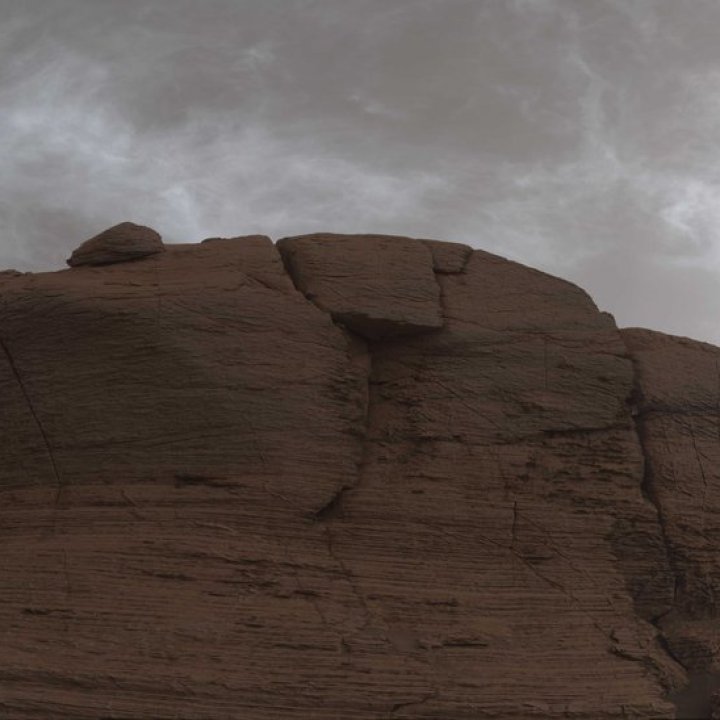
Mars has a super-thin atmosphere compared to Earth, with just 1% of its density. And it’s very dry there as well, with little or no liquid water on its surface. Both of these factors mean that clouds are a rarity in the martian sky, and they typically only form around the equator during the depths of the Martian winter.
But two years ago, the Curiosity rover noticed something interesting: There were clouds forming overhead from its location, earlier than expected. One Martian year later (the equivalent of two Earth years), Curiosity was ready to go cloud hunting once again, and it had captured some stunning and intriguing images of clouds in a usually cloudless sky.
Curiosity began snapping images of the clouds throughout this year, beginning in January. And researchers discovered that the early clouds they were seeing were different from typical clouds, as they are at a higher altitude. And they’re not made from water ice — rather, they seem to be made of frozen carbon dioxide.
One of the most stunning phenomena in the martian sky is “mother of pearl” clouds, which are iridescent and shimmer in all sorts of colors.
“If you see a cloud with a shimmery pastel set of colors in it, that’s because the cloud particles are all nearly identical in size,” said Mark Lemmon, an atmospheric scientist with the Space Science Institute in Boulder, Colorado. “That’s usually happening just after the clouds have formed and have all grown at the same rate.”

Although the effect is highlighted by Curiosity’s Mastcam instrument, this colorful display could even be seen with the naked eye from the Martian surface. “I always marvel at the colors that show up: Reds and greens and blues and purples,” Lemmon said. “It’s really cool to see something shining with lots of color on Mars.”
Editors' Recommendations
- Final communications sent to the beloved Ingenuity Mars helicopter
- NASA is looking for volunteers for yearlong simulated Mars mission
- NASA regains communications with Mars helicopter Ingenuity
- See the passing of a day on Mars with the Curiosity rover
- Perseverance joins the 1,000-sols club on Mars, gets congratulated by Curiosity




